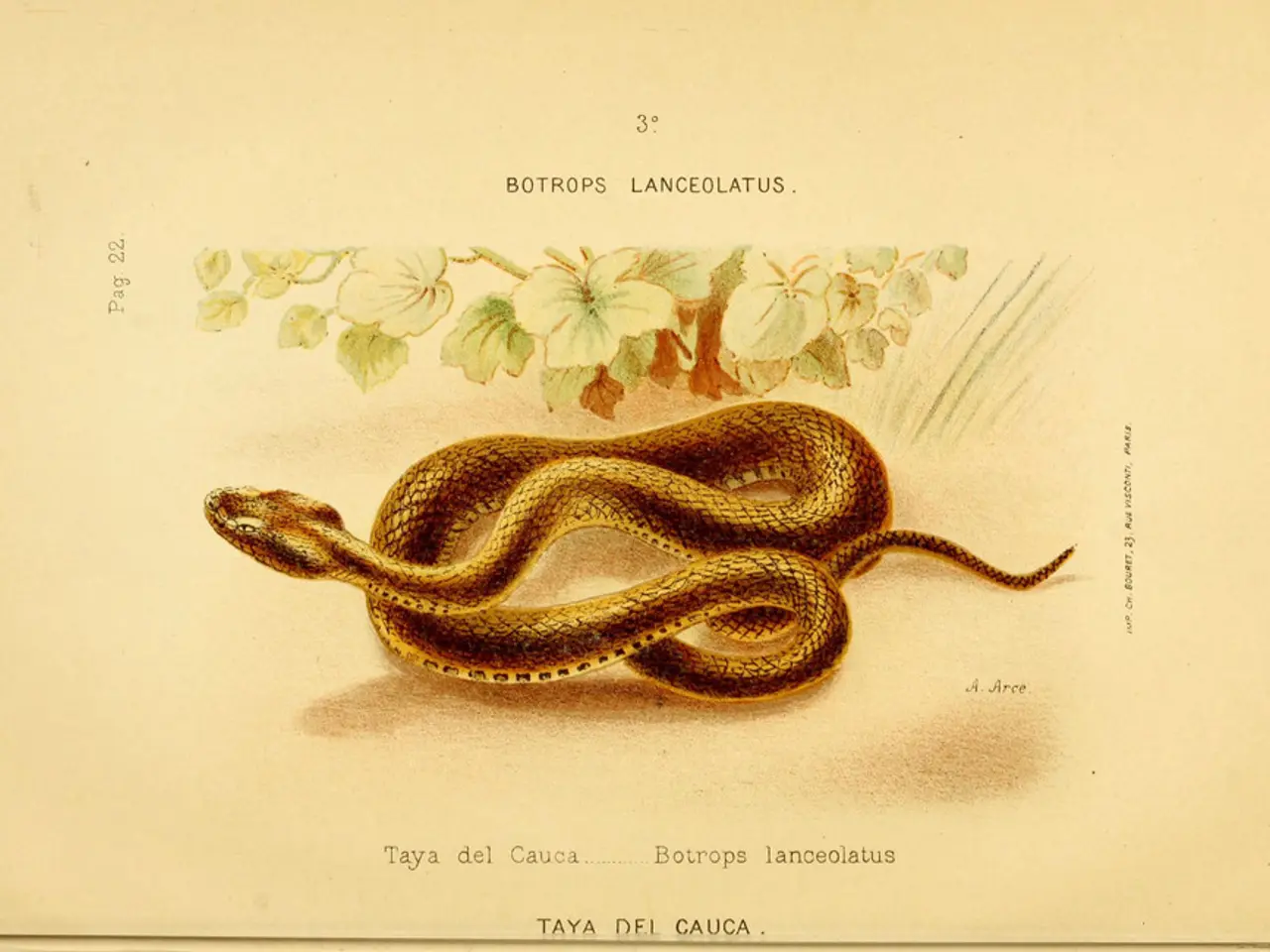Investigating Snake Mating Choices and Reproductive Tactics
=====================================================================================================================
In the fascinating world of reptiles, snakes occupy a unique place. Understanding their behavior and evolution is crucial for comprehending not just individual species but also the broader ecological systems in which they operate.
One essential aspect of snake biology is their reproductive strategies, which are influenced by various factors. These factors can be broadly categorized into visual communication, spatial structure and inbreeding, and sexual selection mechanisms.
Visual Communication and Courtship
Many snake species, such as Philothamnus occidentalis and P. natalensis, employ intricate visual displays like head bobbing, body elongation, and colour changes to attract mates and signal dominance. These displays are crucial for successful mating outcomes, particularly in dense vegetation where other cues might be obscured.
The so-called "courtship dance" in snakes often involves a power struggle between males for dominance, with the winner potentially mating with the female. After a male establishes dominance, he may have to track the female via her scent to mate.
Spatial Structure and Inbreeding
In species like the eastern massasauga rattlesnake, fine-scale spatial population structure can lead to inbreeding due to limited dispersal and habitat fidelity. This spatial structure results in close-kin mating, which can reduce fitness in offspring.
Human activities like habitat fragmentation are exacerbating inbreeding issues by limiting snake dispersal, making it more likely for snakes to mate with relatives rather than unrelated individuals.
Sexual Selection
Sexual selection often involves male-male competition for access to females, with dominance being a key factor in mate selection. This competition can manifest as combat, where the stronger male secures mating rights.
Females may choose mates based on perceived health, strength, or genetic quality. In some species, females might select males with traits that do not necessarily improve offspring survival but are attractive due to other factors.
These factors vary across different snake species and are influenced by their ecological niches and evolutionary pressures. For instance, in arid zones, snakes might opt for fewer, more meaningful courtship attempts to maximize the likelihood of reproductive success. In densely vegetated areas, snakes tend to exhibit different mating systems compared to those in open landscapes due to variations in food availability and shelter.
Understanding these behaviors can guide effective management practices and policy decisions aimed at preserving biodiversity. Genetic diversity is crucial for the health of snake populations, fostering resilience against diseases and environmental changes. Selection pressures drive the development of physical traits that enhance mating opportunities in snakes.
Future research should expand on the nuanced interactions within snake species, focusing on genetic factors in mate selection and how environmental changes influence courtship patterns. Every piece of knowledge gained adds to our capacity to protect these remarkable creatures for generations to come. The examination of snakes and their reproductive strategies not only helps in appreciating their biological complexity but also plays a vital role in conservation initiatives.
[1] Ferguson, S. H., & Collins, M. B. (2001). Mate location in the snake Philothamnus natalensis: a comparison of visual and olfactory cues. Animal Behaviour, 61(6), 1017-1026.
[2] Burbrink, J. A., & Burbrink, S. R. (2000). Genetic structure of the eastern massasauga rattlesnake (Sistrurus catenatus): implication for conservation management. Herpetological Conservation and Biology, 2(2), 119-126.
[3] Schuett, C. A., & Schuett, J. L. (2000). The Biology of Snakes: Evolutionary, Behavioral, and Ecological Perspectives. Academic Press.
[4] Burbrink, J. A., & Burbrink, S. R. (2000). Genetic structure of the eastern massasauga rattlesnake (Sistrurus catenatus): implication for conservation management. Herpetological Conservation and Biology, 2(2), 119-126.
[5] Duvall, J. L., & Wiens, J. A. (2002). Sexual selection and the evolution of male traits in Tantilla snakes. Behavioral Ecology and Sociobiology, 53(1), 64-71.
- The intricate visual displays employed by certain snake species during courtship, such as head bobbing and color changes, also play a significant role in understanding medical-conditions and health-and-wellness related to human cognitive processes, as these displays are similar to non-verbal communication in humans.
- Advances in science, including the study of snake reproductive strategies and their various factors like visual communication, spatial structure, and sexual selection mechanisms, can contribute to the medical-conditions field by improving our understanding of evolutionary pressures and their impact on health-and-wellness.




